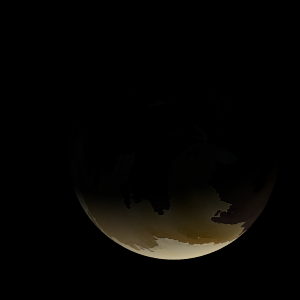|
|
Space Astro
|
Info for exoplanet "Hoelia Dene"
| Scientific (actual) data |
|---|
| Name | HD 83443 c |
| Planet status | Confirmed |
| Mass sini | 1.35 |
| Orbital period | 8241 |
| Semi major axis | 8 |
| Orbit eccentricity | 0.76 |
| Discovered | 2022 |
| Updated | 2022-04-13 |
| Omega | 118.2 |
| K | 20.7 |
| Publication | Published in a refereed paper |
| Detection type | Radial Velocity |
| Mass measurement type | Radial Velocity |
| Star name | HD 83443 |
| Right ascension | 144.3° |
| Declination | -43.27° |
| Mag v | 8.23 |
| Star distance | 43.54 |
| Star metallicity | 0.35 |
| Star mass | 0.9 |
| Star radius | 1.04 |
| Star sp type | K0 V |
| Star age | 2.94 |
| Star temperature | 5460 |
| Wikipedia article | HD 83443 c |
Back
| |
| Fictional info (?) |
|---|
| Suggested name | Hoelia Dene |
| Planet type | Cold planet |
| It has the densest atmosphere of the two cold planets, consisting partly of formaldehyde.
The smooth Borealis basin in the northern hemisphere covers 14 percent of the planet and may be a giant impact feature. |
| Atmosphere | Formaldehyde | 49% |
| Ozone | 25% |
| Xenon | 24% |
| Hydrogen | 1% |
| Carbon dioxide | 0.58% |
| Helium | 0.15% |
| Krypton | 0.11% |
| Neon | 0.0046% |
| Atmospheric pressure | 40 bar |
 |
| No known satellites |
| Google search for Hoelia dene |
|
Website by Joachim Michaelis
|
|
|
|